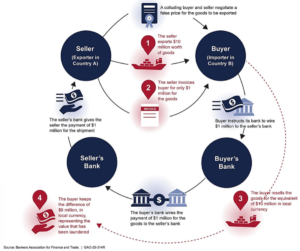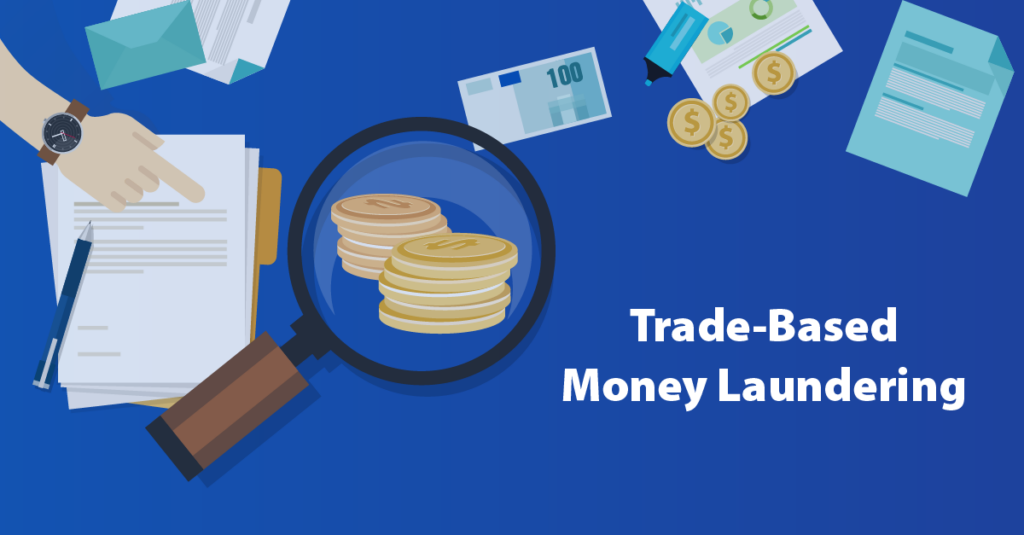The global drug trafficking trade is now worth an eye watering annual global total of $400 billion. Let’s put that into perspective. If we compared this to the gross domestic product of the world’s countries, it would rank at number 40, just above Denmark. According to figures from World Meter, the estimated $400 billion is composed of:
- $110 billion on heroin
- $130 billion on cocaine
- $75 billion on cannabis
- $60 billion on synthetic drugs
To launder these vast sums of money, huge scale is required
Trade-Based Money Laundering (TBML) is a particularly intricate and insidious form of financial crime that presents considerable challenges to banks and financial institutions worldwide. This illegal practice involves the utilization of international trade transactions to obfuscate the origins of illicit funds, making it notoriously difficult to detect and combat. While TBML is a formidable challenge for financial institutions, there are several comprehensive strategies they can employ to combat this growing threat.
What is Trade-Based Money Laundering (TBML)?
TBML is a money laundering method that exploits international trade transactions to legitimize the proceeds of criminal activities. Criminal organizations or individuals employ this technique to obscure the source of their funds by manipulating invoices, shipment documents, and trade prices.
TBML primarily comprises three key methods:
- Over-Invoicing / Under-Invoicing: Perpetrators manipulate the value of goods or services in invoices to overstate or understate their actual worth. For instance, they may over-invoice imports and under-invoice exports to move funds across borders discreetly.
- Fictitious Trades: Criminals create fake or non-existent trade transactions to transfer money across borders without raising suspicion. These fictitious trades appear legitimate on the surface but serve as conduits for money laundering.
- Double Invoicing: Criminals may generate multiple invoices for a single shipment, enabling them to move funds internationally while maintaining the appearance of a legitimate business transaction.
Challenges in Detecting TBML
Detecting TBML is inherently complex due to several factors:
- Complex Transactions: TBML schemes typically involve intricate trade transactions, often spanning international borders, which makes it challenging to identify suspicious activity.
- Evolving Techniques: Criminals constantly adapt their methods, making it difficult for banks to establish consistent red flags or patterns for detection.
- Involvement of Legitimate Businesses: TBML often co-opts legitimate businesses, further complicating the ability to distinguish between legitimate and illicit transactions.
- Large Transaction Volumes: Banks process a substantial number of trade transactions daily, making it challenging to scrutinize each one individually for irregularities.
As the diagram below indicates, the banks and banking system are often part of the TBML schemes and therefore play an important role in preventing it.

Strategies for Banks to Combat TBML
Banks play a pivotal role in the fight against TBML and can employ various strategies to enhance detection and prevention:
- Advanced Technology: Leverage sophisticated analytics and AI-based systems to identify unusual patterns or anomalies in trade transactions. These systems can flag transactions that deviate from expected norms, facilitating prompt investigation.
- Customer Due Diligence (CDD): Conduct thorough due diligence on clients engaged in international trade. Know Your Customer (KYC) procedures can help identify high-risk customers and transactions, which may be associated with TBML.
- Transaction Monitoring: Implement robust transaction monitoring systems capable of continuously tracking and analyzing trade transactions for suspicious activity. This technology can help identify and investigate suspicious transactions in real-time.
- Red Flags: Train staff to recognize red flags commonly associated with TBML. These include inconsistent pricing, frequent amendments to invoices, unusual shipping routes, and other atypical transaction characteristics.
- Information Sharing: Collaborate with other banks, government agencies, and international organizations to share information on emerging TBML trends and threats. A united front can significantly enhance the effectiveness of TBML detection and prevention efforts.
- Regulatory Compliance: Stay current with evolving anti-money laundering (AML) and counter-terrorism financing (CTF) regulations to ensure strict compliance. This is crucial for avoiding penalties and maintaining the integrity of the financial institution.
- Employee Education: Educate employees on the complexities of TBML and provide ongoing training to enhance their ability to spot suspicious transactions. This includes regular updates on new TBML techniques and trends.
Trade-based money laundering represents a substantial threat to the financial industry and has far-reaching consequences for national economies and global security. Banks must remain vigilant and continually adapt their strategies to stay ahead of the ever-evolving tactics employed by money launderers. Financial institutions can play a pivotal role in combating this intricate form of financial crime by embracing technology, enhancing due diligence, fostering collaboration and ensuring strict compliance. Moreover, their efforts are integral in preserving the integrity of the global financial system.
About the Author

Robert Partridge
Rob currently serves as Sales Executive for Skylight at epay, bringing many years of experience in the payments industry. He has focused his career on FRAML and accounting reconciliation platforms and is dedicated to providing quality solutions to detect, manage, and report suspected anti-money laundering and payment fraud. Rob has worked with financial institutions across the US, Europe, Asia, and Africa in implementation, design, support, and sales.
Rob started his career in the UK in the banking industry before moving into the solution provider space, specializing in cash demand planning, accounting, and cost reduction. He also has extensive experience in merchant fraud, behavioral and biometric data gathering and decision, sanctions, PEP, and adverse media screening data.


